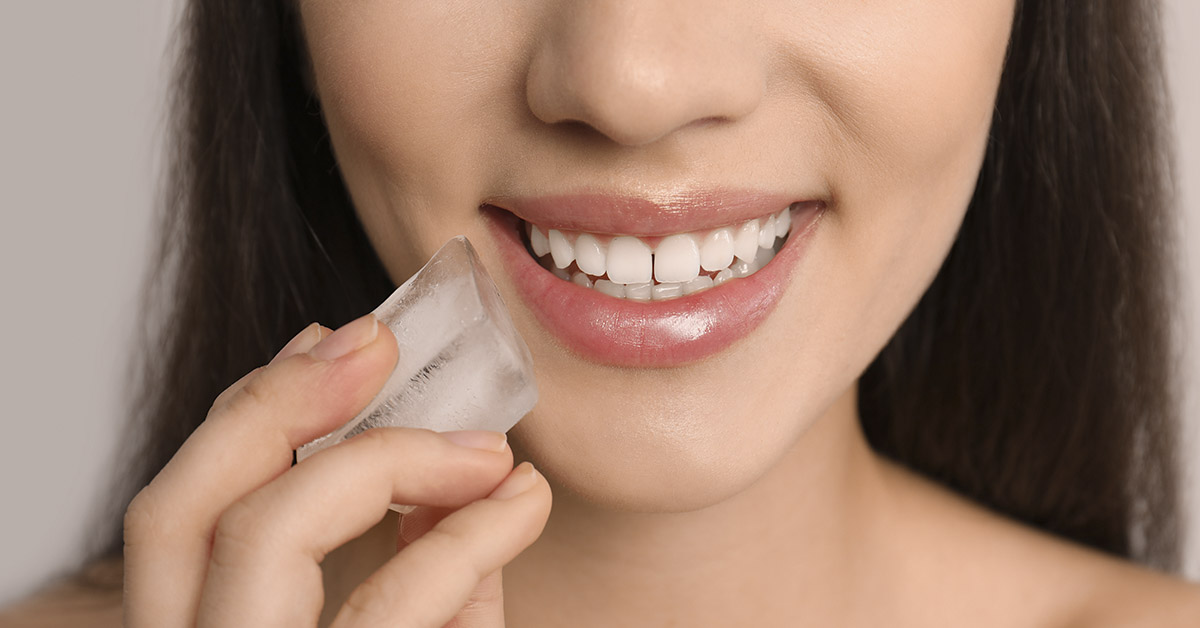Many people scroll through social media looking for skin care tips. After all, many influencers have glowing skin, and their followers are eager to have the same. But like every other topic on social media, there are trends when it comes to face-washing routines, and some are truly bizarre. From face masks made of all kinds of food, DIY coffee exfoliators, banana peel rubs, and even menstrual blood face masks, some are helpful while others are harmful, and a few are completely pointless.
Before trying out a new skincare trend, check what dermatologists and scientific researchers say first. It could save you from skin damage or wasting time and money. Today, let’s examine the ice facial trend, which involves rubbing ice over your face. Ice is known to help with swelling and bruising, but how does it affect people’s complexions?
What are Ice Facials?
Ice facials, also called facial skin icing, are a form of cold therapy that’s supposed to improve people’s appearance. Some beauty practitioners say that it could fight against wrinkles, fat cells, spider veins, or other skin issues. However, some experts don’t recommend the practice, saying it could damage the skin more than help it. Despite its controversy, ice facials are popular treatments in many salons.
There is little scientific evidence about ice facials, but fans claim they can lead to benefits such as:
- tightening saggy skin
- shrinking large pores
- reducing oiliness
- increasing blood circulation in the face
- easing acne pain
- smoothing wrinkles
- reducing swelling and inflammation
- brightening the skin overall [1]
Ice famously helps reduce inflammation and swelling since cold temperatures narrow blood vessels and restrict blood flow to the skin’s surface. That is why ice is the go-to treatment for bruises, sports injuries, and sore muscles. That is also why cold compresses are a common treatment for puffy eyes, so it’s not unreasonable to try ice facials as an extension of that. Therefore, it’s also no surprise that ice can help ease the pain and irritation of pimples and cysts. (Experts do not recommend popping pimples since it could lead to more acne, pain, and inflammation. Applying ice can be a healthier alternative to help with a breakout.) Additionally, restricting blood flow to the face can soothe a flushed complexion and cause brighter skin as it slowly warms up afterward. [2]
But it’s important to remember that the benefits of ice facials are temporary and don’t last long after the treatment. But since facial skin icing is cheap and accessible, it might be worth a try. After all, the best part is that you don’t need a professional appointment to try cold therapy. You can incorporate it into your skincare routine at any time.
Read: Natural Skin Care: What Can You Try To Remove Age Spots, Moles, Skin Tags, Warts, And Blackheads?
Tips for Safe Icing
Some facial icing might help your complexion, but like over-exfoliating or over-washing, too much can lead to skin damage. The extreme cold can easily break the capillaries in the skin and cause spider veins. This can look like red veins, red dots, or what looks like a dry rash on the face. People can get broken capillaries for many reasons, from their genes, sun exposure, pregnancy, and head injuries.
Avoiding too much icing is important to prevent this redness. If you start seeing broken capillaries on your face, stop ice facials until they heal. You may want to avoid icing again in the future, but if you decide to try again, you should change how you do it. People with inflammatory or sensitive skin conditions should speak with their doctors before trying facial skin icing.
For instance, you should wrap the ice cube in a cloth before applying it to the face. This is a good way to try this therapy without the risks of extreme cold. Also, don’t over-ice. You don’t need to press the ice to your face for minutes at a time. Instead, just glide the ice over your skin for a minute or two. Here’s how:
Ice Facials at Home: Step by Step
- Start by washing your hands and then face with your regular cleanser.
- Only use ice from a clean and sanitized ice tray.
- Wrap the ice in a clean cloth or use an ice roller, gliding the ice across your face, including your chin, nose, cheeks, forehead, jaw, and under the eyes. (Do not roll it across your eyelids.) Don’t let the ice linger in one spot; keep the ice moving. Also, use a gentle gliding motion; you do not need to apply pressure.
- Pat your face with a clean towel.
- Apply your regular moisturizer.
- If you are new to ice facials, ice your face for a short period of time and see how your skin reacts before slowly working up to a couple of minutes once a day. [3]
Keep Reading: 7 Health Benefits of Aloe Vera Body and Skin Will Love
Sources
- “Skin Icing: How This Chilly Facial Benefits Your Skin.” Byrdie. Gerrie Summers and Michelle Rostamian. September 8, 2022
- “Can Ice Facials Reduce Puffy Eyes and Acne?” Healthline. Scott Frothingham. April 20, 2023
- “Should You Try an Ice Facial? Benefits, Tips, and Alternatives to Skin Icing.” GoodRx Health. Autumn Dewey. April 18, 2023

